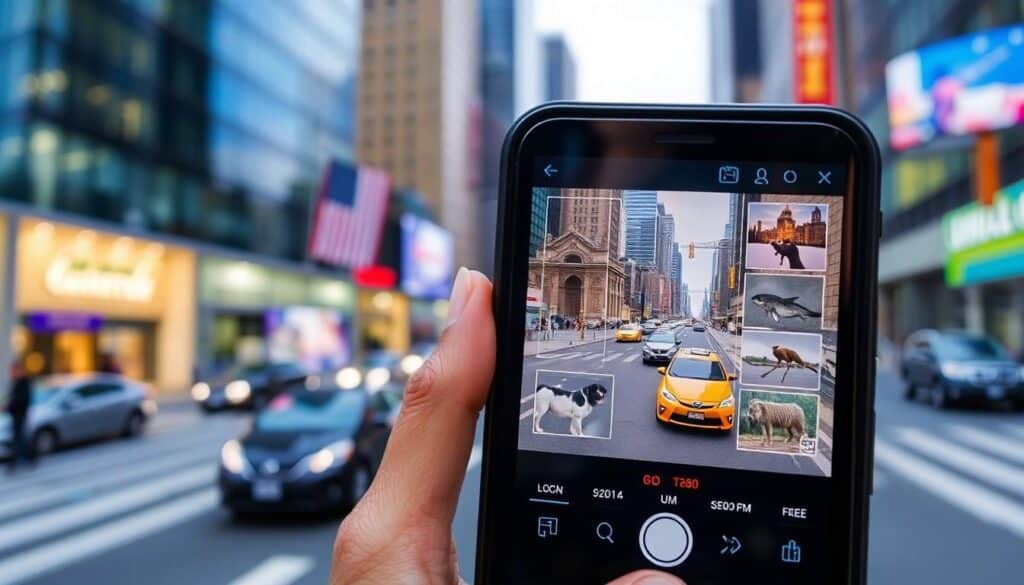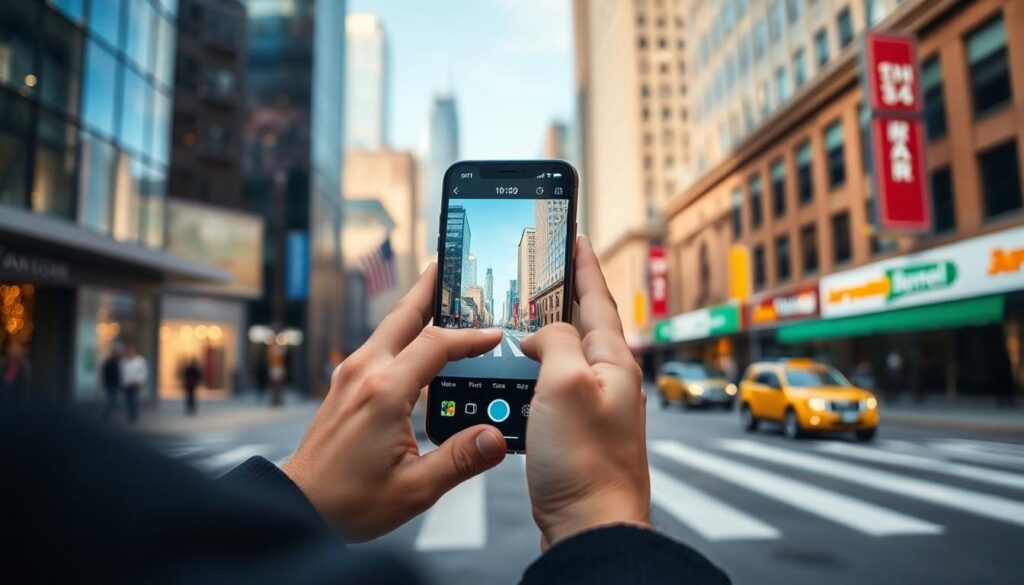Top Picture Identifier Tools to Analyze and Identify Images
Last Updated on March 4, 2025 by admin
Discover how a picture identifier transformed my world. Explore image recognition and its tech advancements!
Download for iOS: Id6501988364
Download for Android: Id6501988364
Understanding Picture Identifier & Image Recognition
Have you ever come across a photo and wondered what it is or where it came from? I know I have, and that’s where picture identifier tools come in handy. These clever tools use advanced technology to analyze images and provide detailed information about objects, places, or even people in just seconds. It’s like having a personal detective for your photos. What Is Google Lens Complete Guide.
With the rise of AI Image_Recognition, picture identifiers have become more accurate and accessible than ever. Whether you’re identifying a rare plant, a famous landmark, or a piece of art, these tools can offer quick and reliable answers. They’re perfect for curious minds like mine who love uncovering the stories behind images.
What Is A Picture Identifier?

A picture identifier is a tool or technology that analyzes an image to provide relevant information about its content. This can include identifying objects, people, landmarks, or other details within a photo. By interpreting visual data through advanced algorithms, it helps users understand the context of an uploaded image or image file. Reverse Image Search.
Picture identifiers often incorporate computer vision and artificial intelligence to deliver accurate results. These tools are commonly used to find similar images online, search by image, or even detect duplicate images. They support various input formats, including an image URL, direct upload, or live capture via a camera on a mobile device or computer device.
Examples of picture identifier tools include image search engines like Google Images, reverse photo lookup platforms, and apps like Google Lens. These systems enhance efficiency in locating visually similar images or identifying the original creator of uploaded photos, which is valuable for website owners, researchers, and casual users seeking relevant information.
Key Features Of Picture Identifiers
Picture identifier tools combine powerful technology to analyze images, identify elements, and provide useful insights. These features make them essential for analyzing image content efficiently.
Image Recognition
Image recognition enables picture identifiers to identify and classify visual content accurately. With advanced algorithms, this feature distinguishes between objects, places, and even subtle patterns in an uploaded image. For example, tools like Google Lens offer image search options to identify landmarks or locate visually similar images online. Accuracy improves with embedded AI and deep learning, which process details like texture, shape, and color to return relevant images.
Object Detection
Object detection focuses on pinpointing distinct objects within an image. Picture identifier tools identify specific components, such as animals, vehicles, or text, using image recognition to provide accurate results related to each detected element. This is useful across industries like e-commerce for identifying product images. Users can upload a photo to locate duplicate images or find similar content using reverse image search engines like Google Images.
AI And Machine Learning Integration
AI and machine learning integration enhance the picture identifier’s ability to deliver precise and dynamic search results. These technologies empower picture identifier tools with functionalities like reverse photo lookup, enabling identification of fake social media accounts or fake images. They refine searches by analyzing uploaded image URLs and learning from search patterns. This makes these tools valuable for exploring different styles, attributing credits, or discovering the original creator of an image.
Benefits Of Using Picture Identifiers

Picture identifier tools offer numerous advantages for individuals and businesses alike by leveraging AI-driven image recognition. These tools enhance accessibility, streamline data organization, and save time through efficient applications. Ai Image Recognition.
Enhanced Accessibility
Picture identifiers make identifying image content effortless across devices. Whether on a mobile device or computer, anyone can upload an image, paste an image URL, or use a photo capture feature like Google Lens to perform an analysis. Free image lookup tools and reverse image search functionalities, available through platforms like Google Images, ensure accessibility for users seeking visually similar images or specific details about uploaded photos.
Search engines also improve accessibility by integrating picture identifier capabilities directly into their platforms. Websites and apps with features like a search bar or upload button simplify navigation, allowing users to identify, save, or find similar images online. These tools support those looking for image recognition, search by image functionalities, or accurate results regardless of technical skills.
Improved Data Organization
Picture identifiers simplify the categorization of image files by using computer vision to classify images based on content. These tools analyze uploaded images to group relevant data, such as objects, landmarks, or patterns, facilitating efficient photo management for website owners and researchers. Duplicate image detection also helps organize files by removing redundant photo instances in storage systems.
Using advanced reverse image lookup tools, users can discover original creators, attribute credits, or track similar images without navigating through irrelevant search results. Businesses can better structure their digital asset databases by identifying specific image contexts, making image retrieval faster and more accurate.
Time-Saving Applications
Picture identifiers streamline reverse photo lookup and search similar images processes, eliminating hours spent manually searching through vast online or offline data. Tools like Google Reverse Image Search and dedicated image finder apps rapidly deliver the most relevant images, enabling quick decision-making. For example, users can investigate fake social media accounts or confirm product authenticity within seconds.
Industry-specific tasks also benefit from using these tools. E-commerce businesses use them to identify trends or tag product photos, while researchers can quickly find additional details about images online. With enhanced search results and efficient image categorization, tasks become optimized, saving time across diverse applications.
Popular Picture Identifier Tools Reviewed
Several effective picture identifier tools enhance the process of identifying images and extracting relevant information. These tools combine advanced technologies to provide accurate results for users on various devices. Ai That Can Analyze Images.
Google Lens
Google Lens analyzes image content using AI-powered computer vision. It identifies objects, places, text, and different styles directly through a mobile device’s camera or an uploaded image. Users can search by image to locate visually similar images or find relevant information in real-time. Google Lens also connects to Google Image Search, enabling users to explore similar images online efficiently.
This tool simplifies reverse photo lookup by helping identify fake accounts, providing attribution for photos, and detecting duplicates. Its ability to scan QR codes and translate text adds to its versatility, making it one of the most widely used tools for identifying and managing image content.
Microsoft Azure Computer Vision
Microsoft Azure Computer Vision offers a robust API for developers who need advanced image recognition capabilities. It analyzes uploaded images to extract details like objects, landmarks, text, and image URL metadata. This tool is especially useful for website owners and businesses aiming for organized data management.
It supports features like categorization, object detection, and search result optimization through customized models. By integrating AI and machine learning, Azure delivers accurate results while enhancing workflows involving reverse image lookup tools and image search engines.
Clarifai
Clarifai is an advanced image finder tool ideal for businesses handling large datasets. It identifies content within uploaded images, such as objects and text, using AI-driven models. As a reverse image search tool, it helps detect visually similar images and classify data accurately.
Clarifai’s features include custom model training for specific needs and robust tagging systems for efficient organization. It supports multiple devices, making it an excellent choice for industries requiring exact identification of image content and streamlined photo search capabilities.

How To Choose The Right Picture Identifier?
Selecting the right picture identifier ensures accurate results and a seamless user experience. Focus on your specific needs, tool features, and device compatibility to make the best choice. Photo Idententifier.
Assess Your Needs
Determine the purpose and scope of use before selecting a picture identifier. If you want to find visually similar images or identify duplicate images for personal use, a free image lookup tool like Google Images might suffice. Professional needs such as categorizing large datasets or detecting specific objects, like text or faces, might require advanced image finder tools like Clarifai or enterprise solutions like Microsoft Azure Computer Vision.
Consider whether you’ll perform tasks like reverse photo lookup to identify fake accounts or find original creators. For instance, researchers might prioritize tools that deliver accurate results for uploaded images, while e-commerce professionals may need solutions to manage image content efficiently.
Compare Features And Pricing
Evaluate tool features to ensure they align with your requirements. Tools like Google Lens offer real-time object detection through a mobile device camera, ideal for quick searches or reverse image lookups. Advanced tools like Clarifai, designed for businesses, provide features like categorization, reverse search, and detecting visually similar images online.
Compare pricing models for premium tools. Some platforms like Google Lens or Google Reverse Image Search are free, while others like Microsoft Azure Computer Vision charge based on usage. Check whether free versions meet your demands or if paid options with better features are essential.
Check Compatibility With Devices
Verify device compatibility to avoid functionality issues. Tools like Google Lens work seamlessly on Android phones and Apple devices, while some image search engines require browser access on a computer device. Free tools like Google Images can often search by image directly through a browser’s address bar, offering broader utility.
Ensure the tool supports your preferred file formats, such as image files uploaded via an upload button or photo captured via a camera. Check if the platform optimizes search results for both mobile and desktop environments. For example, Google Reverse Image Search and reverse search tools often deliver consistent functionality across devices.
Conclusion
Picture identifier tools have revolutionized how we interact with images, offering a seamless way to uncover details and organize visual data. The integration of AI and machine learning has made these tools smarter and more efficient, catering to both casual users and professionals. Whether you’re identifying objects, managing photo libraries, or exploring creative inspiration, these tools provide unmatched convenience and accuracy. Ai Image Analysis.
Choosing the right picture identifier depends on your unique needs, but the variety of options ensures there’s something for everyone. As technology continues to advance, I’m excited to see how these tools will further transform the way we analyze and utilize visual content.

